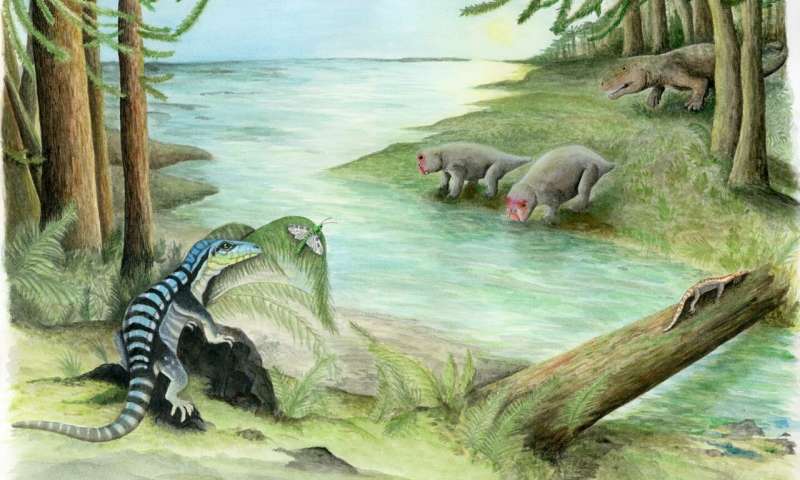About 250 million years ago, Antarctica wasn’t the barren frozen landscape we know today but rather a lush landmass covered in forests and rivers. Naturally, all sorts of wildlife lived here, among them a newly identified iguana-like ancestor to crocodiles and dinosaurs.

Technically, Antarctanax shackletoni — the genus means “Antarctic king” while the latter name denoting the species is a tribute to polar explorer Ernest Shackleton — is an archosaur. These were the direct ancestors of the dinosaurs and crocodiles, evolving from more primitive reptiles in the Triassic, following the Permian mass extinction. The evolution of archosaurs signifies an important milestone in the history of terrestrial life, and fossils such as A. schackletoni, which is one of the first members of this group, help paint a broader picture of how dinosaurs evolved and spread.
Radiocarbon dating suggests that the lizard-like archosaur lived only two million years after the Permian mass extinction event that wiped out 90% of all animal life. In the aftermath of cataclysmic volcanic eruptions and subsequent climate change, most ecological niches were left blank and opportunistic lineages soon stepped up to fill the voids. Archosaurs were one of the groups that profited the most from Earth’s biggest mass extinction, rapidly colonizing the whole planet. Before the event, the group was mostly confined to areas around the equator.
The incomplete fossilized specimen was described by a research team led by Brandon Peecook, a Field Museum researcher. Despite missing bones, the researchers could tell from the fused vertebrae that their specimen was an adult measuring about 4 to 5 feet (1.2 to 1.5 meters) in length. Other, more subtle hints provide insight into the animal’s ecology. For instance, the shape of its limbs suggests it lived on the ground and did not climb trees or burrow.
However, the most interesting thing about this reptile is where it lived. It suggests that Antarctica was a thriving environment for the rapid evolution and diversification of life after the mass extinction.
“The more we find out about prehistoric Antarctica, the weirder it is,” said Peecook in a statement. “We thought that Antarctic animals would be similar to the ones that were living in southern Africa, since those landmasses were joined back then. But we’re finding that Antarctica’s wildlife is surprisingly unique.”
“Antarctica had a combination of these brand-new animals and stragglers of animals that were already extinct in most places—what paleontologists call ‘dead clades walking.’ You’ve got tomorrow’s animals and yesterday’s animals, cohabiting in a cool place.”
The findings appeared in the Journal of Vertebrate Paleontology.






